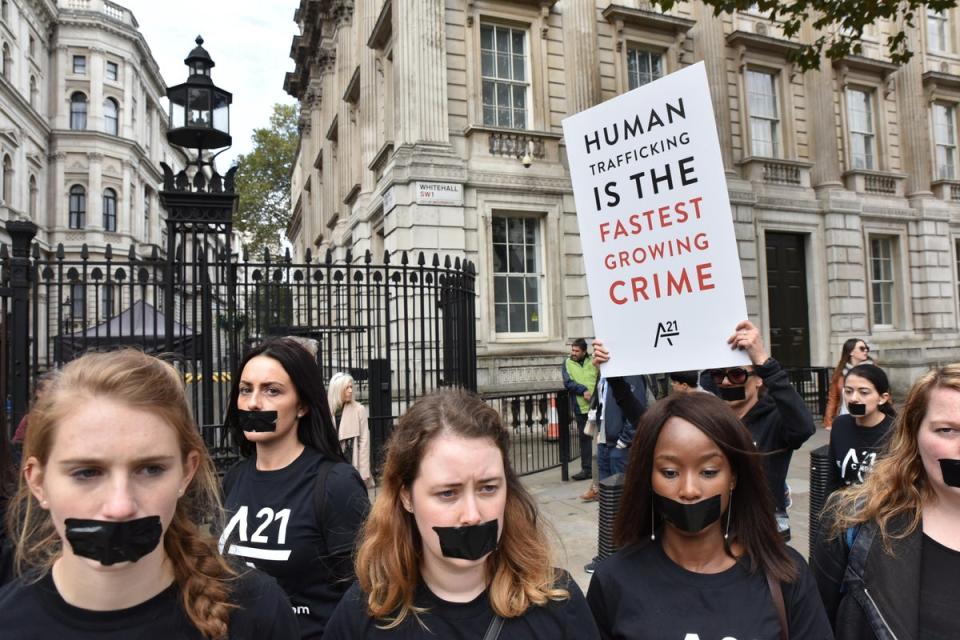International Day for the Abolition of Slavery 2022: What is the annual UN event?

International Day for the Abolition of Slavery, an annual United Nations (UN) designated day focusing on eradicating modern forms of slavery, takes place every year on December 2.
Modern slavery is defined as a person who is exploited by others, for personal or commercial gain.
According to the Home Office, there are an estimated 10,000 to 13,000 victims of modern slavery in the UK.
The International Labour Organisation (ILO) states that there are more than 40 million people worldwide who are victims of modern slavery. This includes 25 million people in forced labour and 15 million in forced marriage.
Sadly, many of these crimes are unreported, as per a 2016 report published by the UK Independent Anti-Slavery Commissioner.
Alongside these victims, more than 150 million children are said to be subjected to child labour, which accounts for roughly one in 10 children globally.
To help eradicate these shocking statistics, the ILO has adopted a legally binding protocol aimed at strengthening efforts across the world to eliminate forced labour, which came into force in November 2016.
What is International Day for the Abolition of Slavery?
On this day, the International Day for the Abolition of Slavery marks the date of the adoption of the United Nations Convention for the Suppression of the Traffic in Persons and of the Exploitation of the Prostitution of Others back in 1949.
The significance of this day is to shine a light on modern slavery and help eradicate contemporary forms of slavery. It's also an opportunity to inform people about their rights and regulations when it comes to correct working practices.
It is observed annually on December 2.
What is modern slavery?
Forms of modern slavery include child labour, forced labour, and human trafficking.
Child labour
Child labour is defined as work that deprives children of their childhood, their potential, and their dignity, and that is harmful to physical and mental development.
Sub-Saharan Africa has the largest proportion of child labourers, accounting for roughly 26 per cent of children aged between five and 17.
The ILO sets out practices to help eradicate child labour, which include:
- All forms of slavery or practices similar to slavery, such as the sale and trafficking of children, debt bondage and serfdom and forced or compulsory labour, including forced or compulsory recruitment of children for use in armed conflict
- The use, procuring, or offering of a child for prostitution, for the production of pornography or for pornographic performances
- The use, procuring, or offering of a child for illicit activities, in particular for the production and trafficking of drugs as defined in the relevant international treaties
- Work which, by its nature or the circumstances in which it is carried out, is likely to harm the health, safety, or morals of children
Human trafficking
Human trafficking remains a major international problem.
Around 25 to 40 million people were enslaved as of 2013, with the vast majority of numbers seen in Asia.
Adults and children can be trafficked and forced to sell their bodies for sex, but people can also be trafficked or enslaved for labour exploitation.
Many victims work in the construction industry, agriculture, the sex industry, and in places such as nail bars, car washes, and cannabis farms, with children also found working in all of these situations, as well as in sexual slavery.
This “Eyes on Trafficking” story is reprinted from its original online location.
 ABOUT PBJ LEARNING
ABOUT PBJ LEARNING
PBJ Learning is a leading provider of online human trafficking training, focusing on awareness and prevention education. Their interactive Human Trafficking Essentials online course is used worldwide to educate professionals and individuals how to recognize human trafficking and how to respond to potential victims. Learn on any web browser (even your mobile phone) at any time.
More stories like this can be found in your PBJ Learning Knowledge Vault.
EYES ON TRAFFICKING
This “Eyes on Trafficking” story is reprinted from its original online location.
ABOUT PBJ LEARNING
PBJ Learning is a leading provider of online human trafficking training, focusing on awareness and prevention education. Their interactive Human Trafficking Essentials online course is used worldwide to educate professionals and individuals how to recognize human trafficking and how to respond to potential victims. Learn on any web browser (even your mobile phone) at any time.
More stories like this can be found in your PBJ Learning Knowledge Vault.
